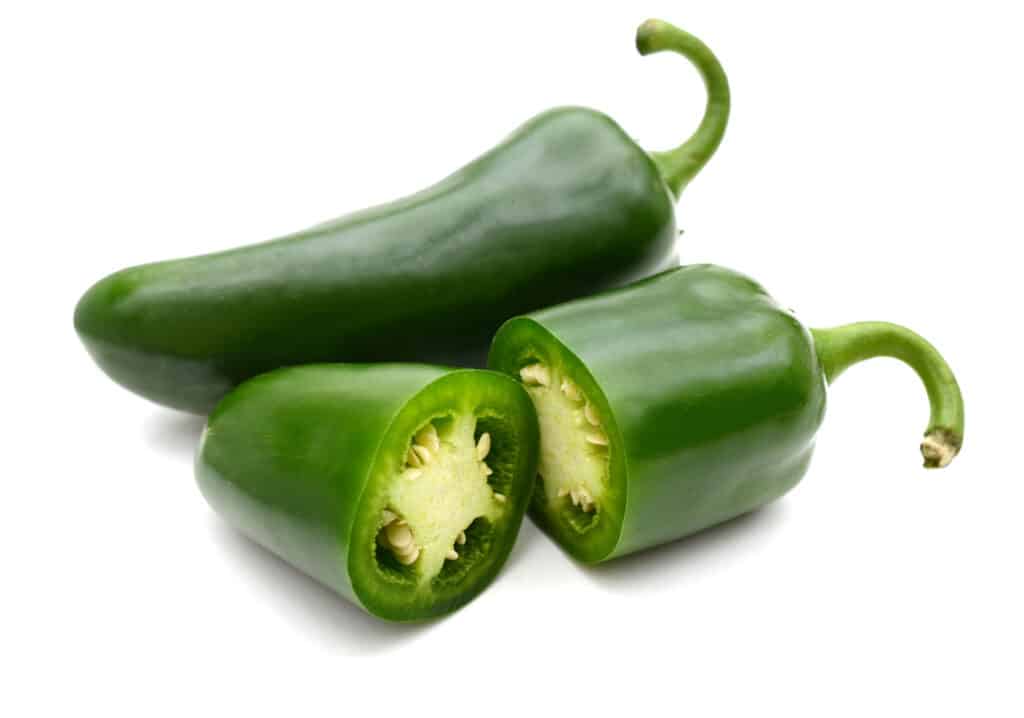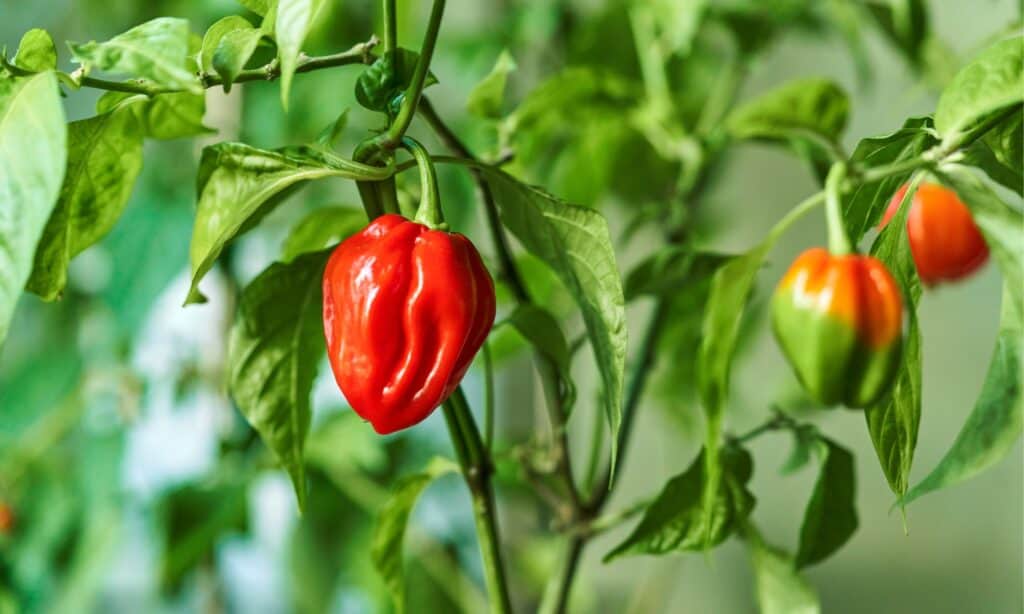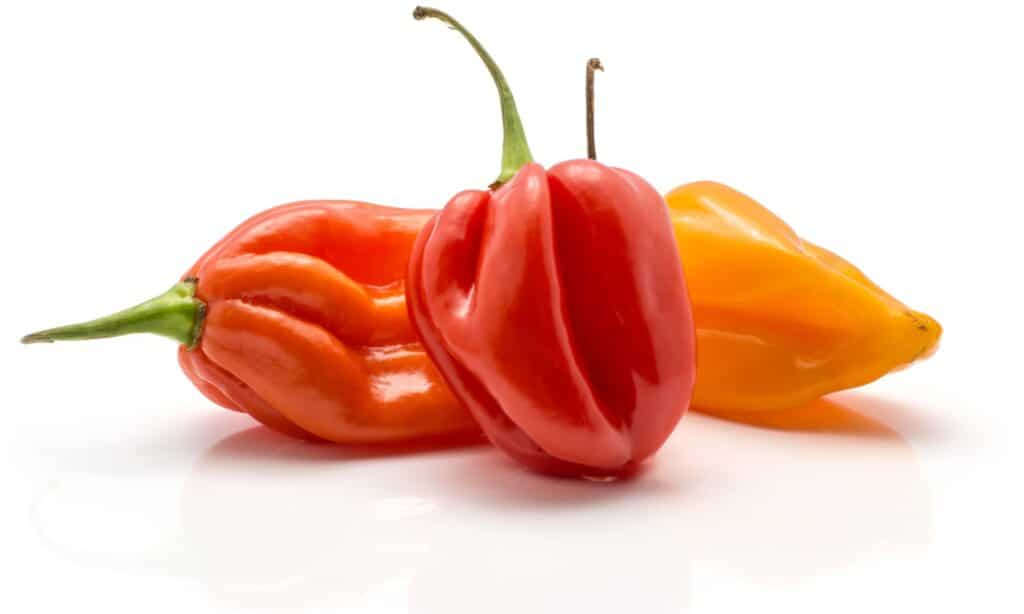Both the habanero and jalapeño are members of the Capsicum family and are culinary favorites. You might wonder what the differences are between them, especially if you are new to cooking with or growing peppers in the garden.
In this article, we will thoroughly compare and contrast them, so you have an understanding of them individually. We will review the growing requirements, taste, origins, and more. Let’s get into further detail below.
Comparing Habanero vs. Jalapeño
| Characteristic | Habanero | Jalapeño |
| Species | Capsicum chinense cv. Habanero | Capsicum annuum cv. Jalapeño |
| Origin of Name | Named after the Cuban city La Habana | Jalapeño means “from Xalapa,” which is the capital city of Veracruz Mexico |
| Plant Origins | Amazon, spreading to Mexico | Central America and Mexico |
| Scoville Heat Units | 100,000 to 350,000 SHU | 4,000 to 8,500 SHU |
| Size of Pepper | Three-quarter to 21-quarter inches | Two to four inches |
| Growth Requirements | 70-90 degrees Fahrenheit, six to eight hours of full sun, only water when dry, dislikes moist soil | 70-90 degrees Fahrenheit, six to eight hours of full sun, only water when dry, dislikes moist soil |
| Plant Size | 24 inches wide | 16-18 inches wide |
Key Differences Between Habanero Pepper and Jalapeño
Habanero Pepper vs. Jalapeño: Species and Cultivar
One difference between these two peppers is that they are different species and cultivars. The habanero is Capsicum chinense cv. Habanero, while the jalapeño is Capsicum anuum cv. Jalapeño.
Habanero Pepper vs. Jalapeño: Name and Origins

The word jalapeño itself means “from Xalapa,” a city in Mexico.
©iStock.com/hongquang09
Another difference is the origins of their name. Discoverers named the habanero after a city in Cuba called La Habana, which is interesting because it isn’t a very popular pepper in that area. It is most popular in the Yucatán Peninsula in Mexico.
The Spanish named the jalapeño; the word jalapeño itself means “from Xalapa,” a city in Mexico. The jalapeño is very popular in Mexico, so the name fits. It is also prevalent in Texas; they named it the state pepper of Texas in 1995.
Habanero Pepper vs. Jalapeño: Size of Plant

The habanero can grow as tall as eight feet in a tropical climate.
©iStock.com/Aleksandr Rybalko
If space is an issue, you will want the much smaller jalapeño plant. They grow about two feet tall and one and a half feet wide. The habanero is twice that size, reaching a height of four feet and a width of two feet. If the habanero is grown in a tropical climate, it can grow as tall as eight feet. Can you imagine how many peppers a plant that tall would produce?
Habanero Pepper vs. Jalapeño: Heat

The habanero measures 100,000 to 350,000 SHU.
©iStock.com/Kateryna Bibro
The most significant difference between these two peppers is the heat they produce. Pepper growers measure the spiciness of peppers in Scoville Heat Units (SHU), a measurement of the amount of capsaicin. Wilbur Scoville developed the test in 1912. Modern-day scientists use High-Performance Liquid Chromatography (HPLC) to determine the exact concentration of capsaicin in a pepper.
If you are looking for mild to moderate heat, the jalapeño rates 4,000 to 8,500 on the Scoville scale. For a hotter pepper, the habanero measures 100,000 to 350,000 SHU. For comparison, pure capsaicin is 16,000,000 SHU and pepperoncini comes in at 900 SHU.
Habanero Pepper vs. Jalapeño: Growing Requirements
Lucky for you, both the jalapeño and habanero have identical growing requirements. If you are planting a pepper from seeds, wait until two weeks after the last frost date or a soil temperate of 60 0F. If planting seedlings or transplants, wait until the daytime temperature is 70 0F.
Peppers come from hot, dry regions; the most critical requirement is never to overwater. They don’t like wet feet! Wait until the soil is dry in the top two to three inches before watering; in the summer, this is usually only once per week or so. After the plant has produced small white or yellow flowers, apply a balanced fertilizer. Small green fruits will start to form. The fruits will mature from green to orange and then to red. Most people eat jalapeños green but wait for habaneros to turn red.
Up Next…
- Scorpion Pepper vs. Ghost Pepper: What’s the Difference?
- Cayenne Pepper vs. Paprika: What’s the Difference?
- Habanero vs. Ghost Pepper: What’s the Difference?
The photo featured at the top of this post is ©
Thank you for reading! Have some feedback for us? Contact the AZ Animals editorial team.






